*IN MEMORIAM*
Bob Bower passed away May 23, 2017. Read his obituary here.
Use controls above or click here to open this Hometown Heroes podcast in a new window
94-year-old Bob Bower of Delano, CA appears on episode #337 of Hometown Heroes, debuting October 18, 2014. Bower flew F6F Hellcats with Carrier Air Group 9 in World War II, operating off of the USS Lexington (CV-16) and the USS Yorktown (CV-10).
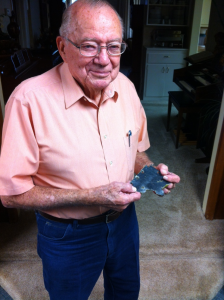
Raised, with his two brothers, by their single mother in Visalia, CA, Bower started delivering newspapers as a boy. You’ll hear a little bit about where that took him, as well as what he remembers about December 7, 1941. He had graduated from Visalia High School in 1937, and his brother’s experiences in aviation had an influence on Bob’s choice to pursue flying for the Navy in 1942.
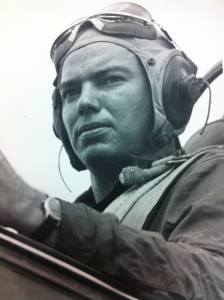
In training, he flew SBD Dauntless and SB2C Helldiver divebombers, in addition to F4F Wildcats, but the F6F would be the only model he flew in combat. Listen to Hometown Heroes to hear Bob describe what he enjoyed about flying that fighter plane, and hear about the close calls he experienced in Hellcats.
Don’t let his humility fool you, Bob’s first taste of combat produced a pretty remarkable day for the then 24-year-old fighter pilot. It was February, 1945, and the invasion of Iwo Jima was about to begin. Bob and his fellow pilots of VBF-9 were sent toward the island of Oshima at the entrance of Tokyo Bay, hoping to intercept any Japanese planes that might head for Iwo Jima. There were no enemy airplanes at the first airfield they attacked, so they shot up the facilities and moved on in search of airplanes.
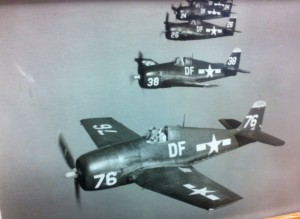
“This time we got a close look at Japan as we came in at about 25 feet,” Bob was quoted in the Visalia Times-Delta. “At the southern end of the peninsula we hit three airfields, all with a few planes.” He set one plane on fire there, and after checking his fuel level while heading back out to sea, decided he had time for one more attack. Little did he know that pass would nearly cost him his life.
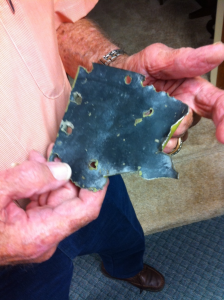
He spotted a low-flying plane, turned toward it, and with a short burst from his array of 50-caliber machine guns, made it explode. “Things were happening rapidly then,” he remembered in 1945. “I could see the field ahead with plenty of planes. I could see the first anti-aircraft fire coming our way. I still had quite a bit of speed so I madeone strafing run over the field, this time getting myself two bombers, burning them both.”
He had inflicted his damage, but flying at 50 feet elevation, he was dangerously close to enemy guns, and he would soon realize that his Hellcat had sustained some damage. “Somehow or other I kept my plane under control,” he recalled, “but picked up a few gray hairs when I looked out and saw a good portion of my left wing gone, right out of the middle.” Listen to Hometown Heroes to hear Bob explain how the design of the F6F made the middle of the wing a very vulnerable place, and find out how close that damage was to sending him out of control. He even considered bailing out and ditching the plane, not wanting to risk the lives of anyone aboard the carrier. He decided to bring it in, and when the repair crew attached a new wing, Bob was presented with a shrapnel-riddled piece of the damaged wing. He has held on to that one-of-a-kind souvenir since 1945, and you’ll hear him speak to its significance on Hometown Heroes.
Bob provided air support for the invasions of Iwo Jima and Okinawa, and you’ll hear his recollections of those battles, as well as a big moment for the Navy on April 7, 1945. The famed Japanese battleship Yamato was on its way to Okinawa, but was intercepted by US Navy planes and sunk. Bob participated in the attack and witnessed the Yamato burning before it went under.
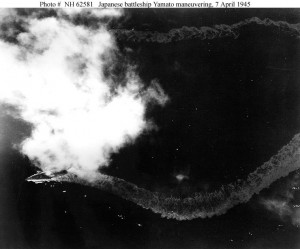
When Japan surrendered, Bob was busy training in divebombers again to participate in the planned invasion of Japan. A recipient of multiple Air Medals and the Distinguished Flying Cross, Bob was discharged from the Navy in 1945. He got into the insurance business in Delano, and he’s been there ever since.
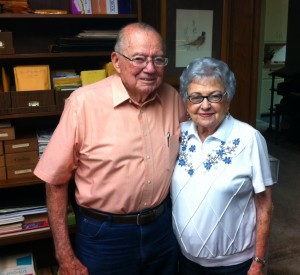
After losing his first wife to cancer, he married a woman who had endured the loss of her husband. Bob and Doris have enjoyed 42 years of marriage, and take pride in their combined six children, eight grandchildren, and five great-grandchildren.
Thanks to Bob’s longtime neighbor, Peter Antonell, for letting us know about this humble hero. If you happen to cross paths with Bob, please thank him for serving our country, and ask him to show you his special souvenir from World War II.
—Paul Loeffler

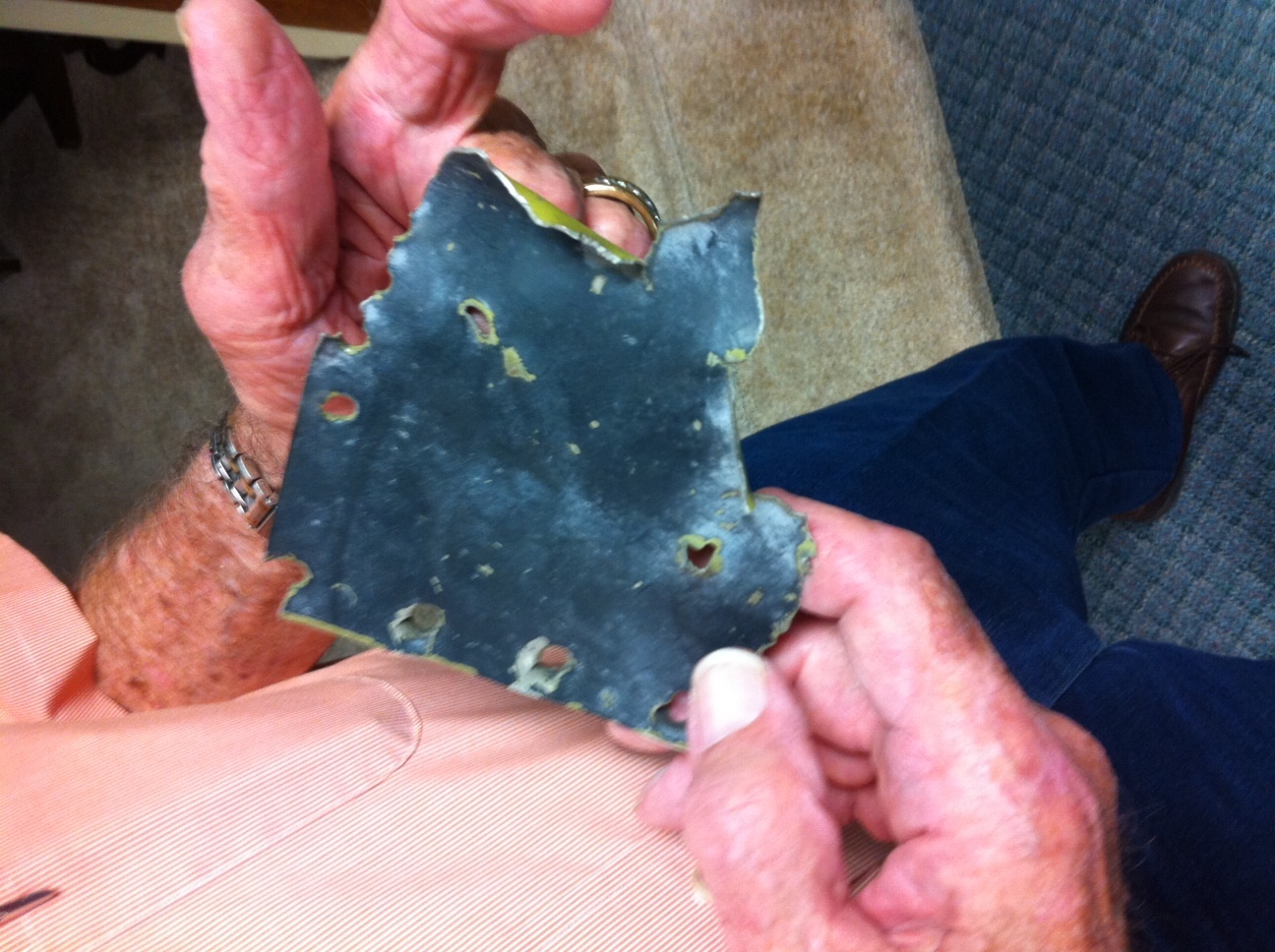
Leave a Reply